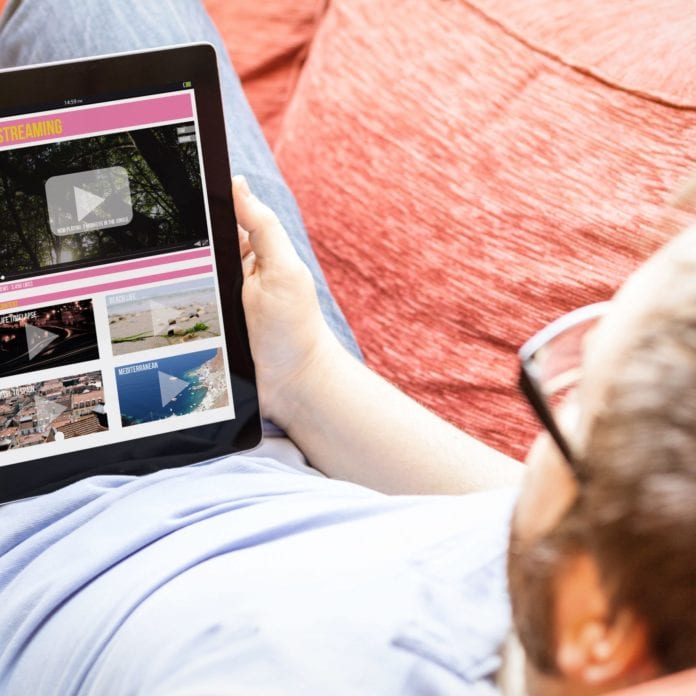Operators face the question of how to manage their networks in the face of strong domestic TV and video demands
There are few things mobile operators do which are more controversial than prioritizing some types of network traffic over others or limiting the quality of video which consumers can stream. Industry observers often criticize U.S. mobile operators for being heavy-handed in network management compared with other countries. The attacks often paint U.S. operators as backward compared with the best mobile networks around the world.
However, there are alternative analyses which point to U.S. mobile operators being global leaders, although not in all ways. Why? Because there is a much stronger TV and video industry in the U.S. than in other countries. Such high video use places a unique demand on U.S. mobile networks, resulting in U.S. mobile operators becoming innovators in the technologies and solutions needed to best cope with that demand, such as network prioritization.
As mobile video traffic continues to grow, other operators around the world will need to decide how best to manage traffic to deliver both a great video experience for their users as well as fast overall download speeds. Some already do. The thinking behind network prioritization and traffic management techniques is that it’s better to provide a good experience to many people by managing or limiting usage — for example by capping the video resolution allowed — than it is to allow everyone unlimited usage which results in poor user experiences at busy times.
U.S. operators face a particularly acute video challenge. The U.S. has long had a vibrant TV market, from early mass market rollouts of multichannel cable TV in the 1970s and 1980s to the arrival of Netflix video streaming more recently. In the 2nd quarter, Netflix reported that a staggering 45% of their total paid subscriber base lives in the U.S. Beyond these 56 million U.S. paid memberships there will be many more active viewers because Netflix accounts are used by more than one person. Netflix supports up to five profiles on each account.
It’s not only Netflix that is incredibly important in the U.S.: 46% of U.S. consumers watch TV or movies using subscription video-on-demand (SVOD) services — including Amazon Prime Video, HBO Go, Netflix and others — compared with 36% in the UK, 17% in France and just 12% in Japan, according to U.K. regulator Ofcom’s research.
High adoption of TV-style video services across multiple devices places increased load on U.S. mobile operators as consumers transfer viewing from traditional home devices onto smartphones or skip other devices and go directly to smartphones as a media consumption device. The typical length of these formats adds even further pressure because even the shortest TV comedy program is over twenty minutes long, while drama programs are usually an hour, including advertising, or forty-two minutes or more without advertising.
The effect of high U.S video consumption together with U.S. operators’ network management practices is to deliver a lower overall consumer video experience than is possible given the download speed performance of U.S. mobile networks.
On all four U.S. mobile networks the speeds measured by our users are over 14Mbps, which should theoretically be enough to deliver high definition video streams. On two of the U.S. networks, users experience over 20 Mbps download speeds, which could even support 4K/Ultra-high definition (UHD) video quality. In practice, speeds are not always consistent, and other issues can affect the delivery of video such as packet loss or “stalling” which is why U.S. operators do not routinely advertise the ability to watch 4K video streams on their mobile networks.
According to IAB research, 52% of U.S. adults streamed traditional TV shows on their smartphone weekly in 2017, indicating the extent of the ongoing transition to mobile video viewing in the U.S. The rise of the modern smartphone further helps to drive higher mobile video consumption. For example, the size of the iPhone display has increased markedly over the years. The original iPhone had a screen which was just a 3.5” in diagonal size; by contrast today’s most popular iPhone, the iPhone X, offers a 5.8” display alongside a wide 18:9 aspect ratio and high dynamic range (HDR) color. Similarly, the first Samsung Galaxy Note offered a mere 5.3” display while the Note 9 now offers an 6.4” display.
Social video consumption is also very strong in the U.S. According to Pew Research, 85% of U.S. teens use YouTube. Similarly, in Q2 2018 Snap reports that 43% of Snapchat’s total daily active users are in North America. These 80m North American Snapchat daily users places unique pressure on U.S. mobile operators because Snap is a rich media service with extensive distribution of social video clips.
The discussion of network prioritization in the U.S. often revolves around the complexities of network neutrality, which is both a deeply technical and an increasingly political issue. But there is a simpler explanation for U.S. mobile operator network prioritization actions.
U.S. consumers have a long history of loving to watch TV and video. This has now transferred onto mobile devices and U.S. operators have had to act to ensure mobile video viewing does not damage the overall experience for U.S. mobile users. Plus, because the U.S. is such a leader in TV and video adoption, it means the approaches U.S. operators are now taking to manage mobile video traffic are relevant case studies for mobile operators across the world.
Ian Fogg is VP Analysis for OpenSignal where he leads the team that develops new insights and analysis using OpenSignal’s mobile analytics data. He also oversees the company’s global relationships with regulators, financial analysts and industry associations.

